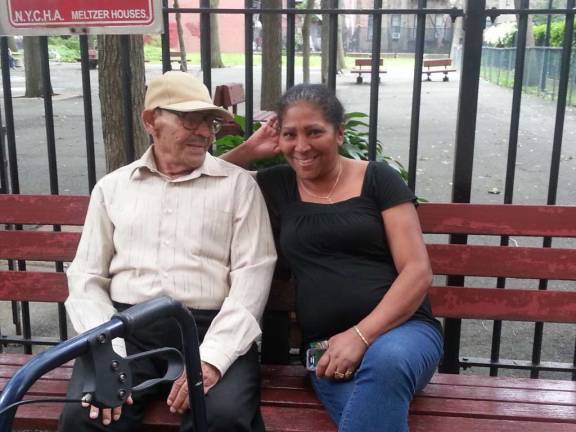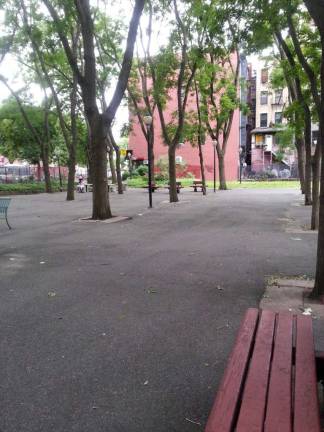As Meltzer Towers Prepares for Development, Residents Reflect


Updated August 25, 2016
Some Housing Authority tenants are pushing back, while others are behind the plan
By Adam Janos
Celia Santiago, resident of the Meltzer Towers Senior Center, is protesting the New York City Housing Authority (NYCHA) Infill plan. The Authority has identified lots of city-owned land that lie in the middle of several housing projects throughout the city as "underutilized," and plans to sell leases to the land to private developers that will construct buildings with 80 percent market-rate housing. The money from the leases, will be used to create revenue streams and help NYCHA get out of financial trouble by closing gaps in their severely debt-addled budget.
For the Meltzer Towers Senior Center at 94 East 1st Street, the plan means the destruction of the Meltzer Park seating area, a gated-off section of the property adjacent to the towers with over thirty trees, small gardens, and several benches. According to city estimates, that seating area potentially represents 90,000 square feet of primate real estate, and 97 new apartments to rent out.
Santiago's fellow protester and Lower East Side NYCHA resident Tito Delgado sees the development of the land as an issue of economic justice and political might.
"They've got money to bail out banks," Delgado says. "But there's no political will to help out poor people."
Protesting has been slow-going in the early stages for Meltzer Park advocates. When Goles (Good Old Lower East Side) organized a protest of the city's infill plan last Thursday, Santiago was the only Meltzer Tower resident who went. At time of print, an online petition to save the park had 330 signatures, far short of their 1,000 signature goal. Still, Santiago believes her tower neighbors' inaction is rooted in fear, not indifference.
"Folks here are elderly folks," Santiago said. "They're scared that if they protest, they will retaliate."
They also may not have the physical or linguistic capabilities to protest.
Carlos Fivera, 86, relies heavily upon a walker. Blood thinners that help his circulation have in turn swollen his knees to the point where he can no longer control them. His left eye is afflicted by cataracts. Further complicating matters, Fivera is hard of hearing, and primarily speaks Spanish. Of Puerto Rican descent, he came to the States in 1947; after working twenty years as a handyman in New York hotels, illnesses took Fivera in and out of work until he retired for good in 2000.
However, even though he enjoys the space, he sees no reason it shouldn't be developed.
"The government is going to do something that benefits people. They're doing it because they have the money. The generations are growing, and there's no space for the poor," he said.
Maria Thomson, a home health aide who works at the Towers, believes the space is underutilized, noting that most people sit on the benches outside the towers and neglect the park altogether. According to Thomson, the park area is primarily used by locals from outside the towers, on lunch break. However, she does note that some of the Chinese tenants at the towers use the seating.
Still, she thinks it'd be a shame to lose the space.
"There's no other space for them to go. There's no green space," Thomson said. "And they're going to build it for upmarket residents. They're gong to tear up the trees, the gardens? to what end?"
To Fivera, it's a story of Robin Hood. NYCHA will take from the rich, and use the money to give back to the poor.
"Who else are they going to take money from?" Thomson asked. "The poor don't have anything to give."